If you want to recreate the taste and aroma of exquisite Japanese cuisines, growing Best Japanese Herbs is a great way! Check out our exclusive list!
Here is a quick guide of the Best Japanese Herbs that are used in the variety of cuisines across Japan, for their lip-smacking taste! Pick your favorite from the list and enhance the taste of your dishes!
Check out our article on making Japanese Balcony Garden here!
Herbs for Japanese Garden
1. Shiso
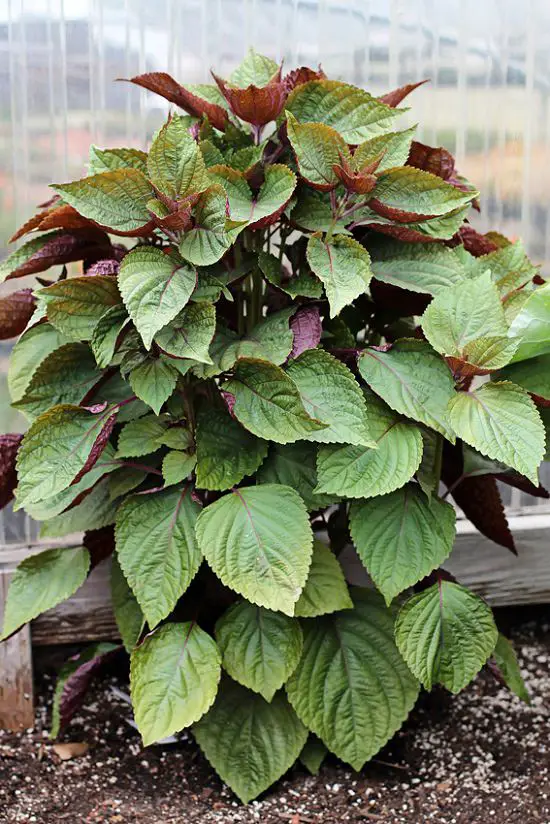
Botanical Name: Perilla fructescens
USDA Zone: 2-11
Shiso has a distinctive flavor that combines the aromas of citrus, mint, basil, anise, and coriander. Its red and green leaves are the main ingredients in sushi, sashimi, soups, and tempuras. You can also add it to salads, green tea, stir-fries, and scrambled eggs.
Growing Tips: Grow this aromatic herb in rich, moist soil in full sun though it can survive in light shade as well.
2. Mitsuba
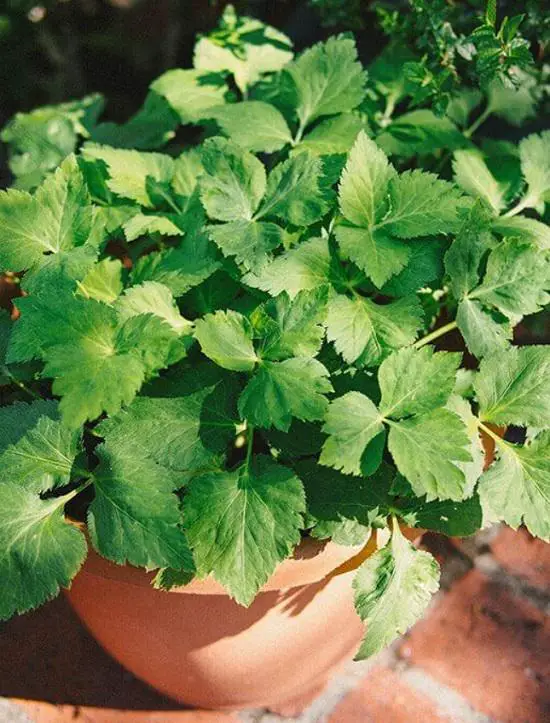
Botanical Name: Cryptotaenia japonica
USDA Zone: 5-8
Mitsuba is a herbaceous perennial with leaves and stems having a similar flavor like celery and parsley. They are used mostly used as a garnish in salads, soups, and in other hot and cold dishes.
Growing Tips: Grow this herb in average to medium moist, well-drained soil in close to full shade as the full sun may burn the leaves.
3. Japanese Red Mustard
Botanical Name: Brassica juncea var. integrifolia
USDA Zone: 2-11
Also known as Japanese giant red mustard, this mustard variety brings spicy taste to dishes. Young tender leaves can be eaten fresh or added in stews, soups, salads, or stir-fries.
Growing Tips: Plant it in the rich fertile, well-drained soil in full sun.
4. Wasabi
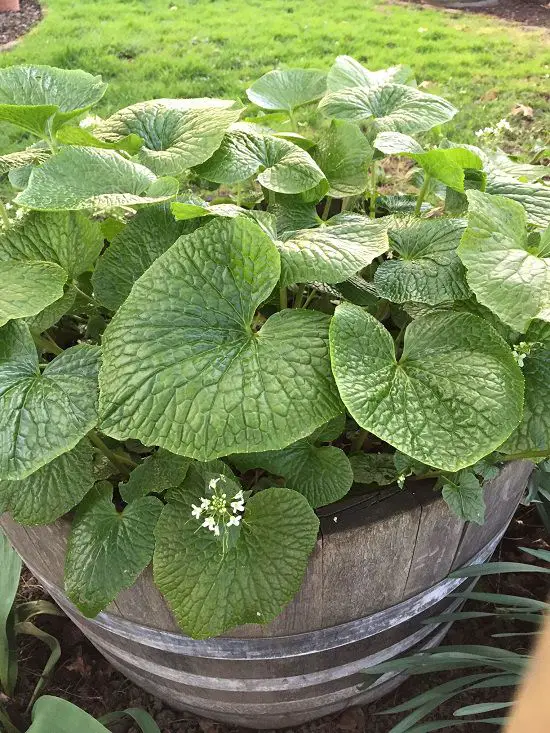
Botanical Name: Wasibia japonica ‘Daruma’
USDA Zone: 7-10
If you like sushi, then you must be familiar with the spicy green seasoning! It also goes by the name-Japanese horseradish. This perennial herb features green, thick, and heart-shaped upright leaves. You can use it in sushi, sashimi, cold soba, udon noodles, and seafood.
Growing Tips: Wasabi prefers organic-rich, loose soil with pH 6-7 under a shady area of your garden.
5. Negi

Botanical Name: Allium fistulosum
USDA Zone: 6-9
Negi belongs to the onion family. It is also popular as Welsh onion, Japanese leek, or stone leek. The plant has grassy leaves and flowers that have a chive-like mild taste. You can use it in salads, soups, sandwiches, curries, noodles, and seafood dishes.
Growing Tips: Use a commercial potting soil and keep it gently moist until seeds begin to germinate, you can plant the herb in the garden after the danger of frost passed in full sunlight.
6. Sansho Pepper
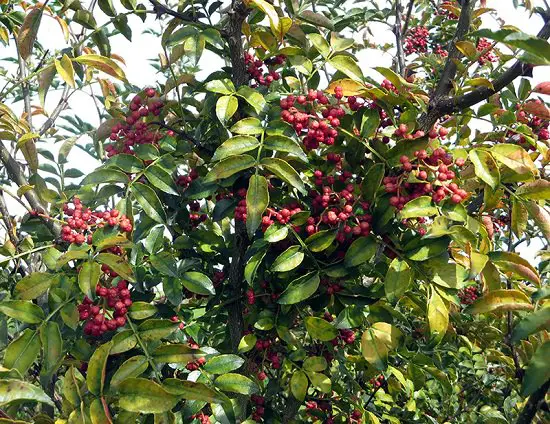
Botanical Name: Zanthoxylum piperitum
USDA Zone: 5-9
Sansho pepper is a healing medicinal herb related to the Sichuan peppercorn; it has a floral, tangy, and lemon-like flavor. You can use it for fish seasoning, barbecue dishes, and grilled meat. It also pairs really well with spices like sesame and ginger.
Growing Tips: Use well-drained soil and provide 4-5 hours of sunlight a day.
7. Mizuna
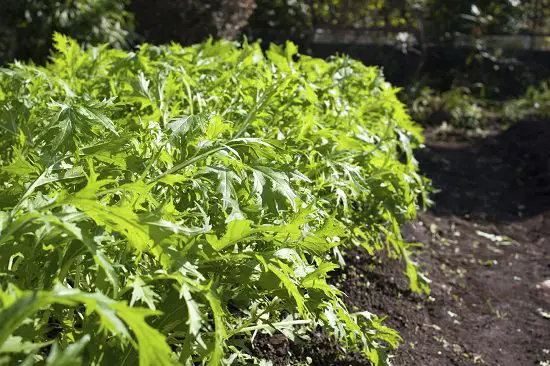
Botanical Name: Brassica rapa var. niposinica
USDA Zone: 4-9
Definitely not a herb but its a popular salad green, native to Japan, where it is commonly known as’ ‘Shui cai’, and ‘Water Greens.’ This species produces white stalks, glossy green feathery-tooth foliage, and golden-yellow flowers. You can use it in salads, pasta, risotto, and soups. It can also be Sautéd and stir-fried.
Growing Tips: Grow this peppery-tasting herb in rich, well-drained soil in full sunlight.
8. Burdock/Gobo root
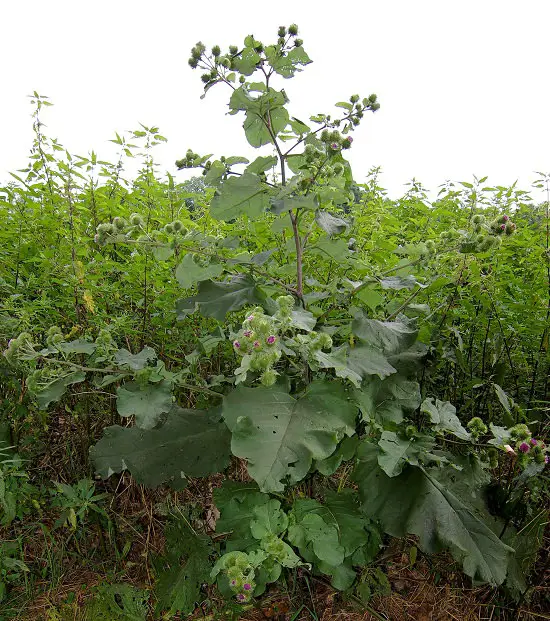
Botanical Name: Arctium lappa
USDA Zone: 3-7
Not exactly a herb, Burdock is one of the most popular vegetables in Japan. This root is a biennial that also grows in Europe on verges, roadsides, and scrubland. It is a useful food source and a medicinal herb. People use it in lieu of potato due to its starch-like texture. You can fry it and also use it in tea.
Growing Tips: The plant is hard to grow. Dig dip and to avoid splitting multiple thin roots, as it ‘ll prolong the maturity time.
9. Wasabina Mustard
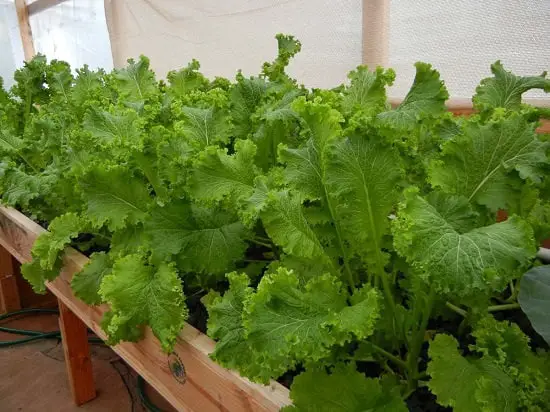
Botanical Name: Brassica juncea
USDA Zone: 7-9
It’s a leafy annual with serrated leaves. It has a taste similar to that of horseradish and mustard. They are the main ingredient in the Japanese dish ohitashi, and Japanese pickle tsukemono. You can also add them to salads, sandwiches, and spring rolls.
Growing Tips: Keep the soil moist and place the plant at a location where it gets 3-4 hours of sunlight.


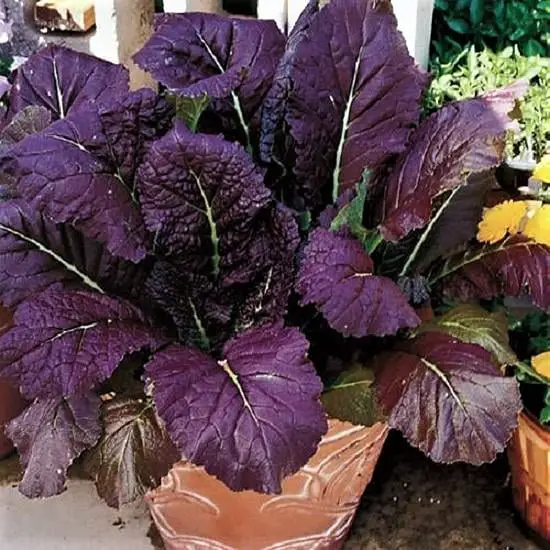

There is a tiny leaf (with many leaflets) that is available only for a couple of weeks in spring. I had it in early April one year in Japan—do you know what it is??